Article co-written by Marion Duchatelet and Jonathan Loriaux.
Email, or rather the SMTP protocol that powers our emails, will be 40 years old in 2022 (me too, party or what?). So what can be the future of email when it has this advanced age .
40 years, an eternity for a digital technology! And yet, it is still moving. Better yet, as a marketing channel, email is evolving, getting stronger, innovating. And contrary to what was said a few years ago, it is far from being moribund.
However, consumers now have access to other tools to communicate with each other. They massively use social messaging to exchange short and instant messages.
In companies too, the use of email is decreasing (and that's good) when it comes to communication within teams, and sometimes even in exchanges with suppliers or customers. Collaborative tools have taken over, mainly Slack and Teams, which have become established in many companies.
But as soon as it is a question of being formal, of communicating with individuals we know less, of receiving offers, of conversing with the administration, of receiving a confirmation of purchase, ... email remains privileged in the written digital exchanges.
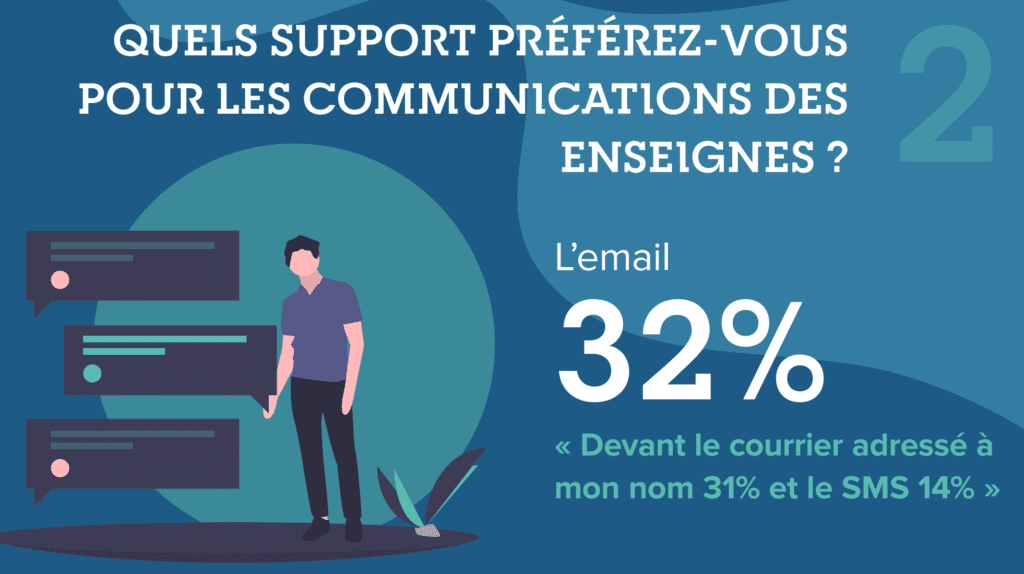
Which channels are "competing" with email?
Before we talk about the future, let's see what's happening next to email!
Email marketing is, and remains, direct marketing. That is to say that it allows you to send the right message to the right person at the right time (yeah, okay, we've been saying that for 25 years now... and we'll continue).
Even if the term "direct marketing" is no longer fashionable, the channels that "compete" (note the quotation marks) with email must absolutely respect these 3 conditions.
And these channels continue to grow in number year after year. Many channels initially built on the "one-to-many" model have progressively opened up the possibility of sending a personalized message to a specific individual and triggering that message at the desired moment.
Let's mention a few digital "direct" channels, from the oldest to the most recent:
- The SMS (the ancestor not yet buried): Once shunned, SMS is widely used (and well accepted) to send alerts with a high read rate or reminders, for example of appointments. SMS is also evolving, and it seems that we will soon be talking about RCS.
- The display (They are everywhere, who still sees them?): The world of display has been revolutionized in recent years by a number of buzzwords... which have radically changed the possibilities of this channel.
- The mobile notification (it was the future, but it's not for everyone): Mobile notification is obviously a direct channel. Even if in the end it is only accessible to brands that manage to get an app installed (and there aren't that many) and to users who have agreed to receive the notifications.
- The social networks (caramba, no, you won't get the data of your likes): We have been waiting for a long time to see how we could interface CRM and social networks. And it is mainly through targeted advertising that we are now able to do so.
- The social messaging (they are now everywhere): This is probably the biggest evolution of the last few years. And probably also one of the biggest opportunities for brands to reduce a bit the use of email to diversify the communication to their customers.
- The chatbots (there's a bit of everything): The buzzword of the moment. Chat bots are everywhere, more or less intelligent, more or less able to personalize exchanges. There is still work to do on this side. The best is when we manage to connect chatbot and contact database (for BtoB prospecting it is ???? !)
- ... even your Connected TV could be in this list... but we'll stop here 😉

What future for email as a technology?
Email security remains a high priority in order to fight phishing, spam and other attacks. Efforts are underway, with DMARC (see our DMARC white paper) that continues to advance and will be increasingly important in the future. And the deployment of BIMI which will take a new dimension with the adoption by Google.
The strength of email is SMTP, which is an open protocol. Unlike most other direct channels, it does not depend on a private company or application installation. If you have a domain name, an internet connection and the necessary knowledge, you can send your emails for free, without anyone's consent (I'm talking from a technical point of view, you obviously need the consent of your recipients!)
Another advantage of SMTP is its interoperability. You can send your emails to any server using any domain, anywhere in the world. This is a major difference compared to for example social messaging. It is unlikely that you will ever be able to send a message from Whatsapp to Snapchat (unless Facebook finally manages to get its hands on its competitor). Without this interoperability, email would have disappeared long ago.
But what about tomorrow? What will my emails look like?
I can see that you are getting impatient. You make promises in the title, and then poof, there's a lot to read before you get to the main course. Patience little beetle.
Execution, the most important element for innovation in your messages!
What's complicated is applying yesterday's good practices and adding all the new possibilities that are emerging. And to apply that every day. You have to be able to execute innovation, without losing sight of the good practices of the past, which for the most part, remain totally valid.
Many of the elements that will be presented below have been cited for several years in numerous articles.
They are still relevant, because in reality, they have often not gone beyond the stage of technology demo, or at least, have not become an everyday practice for advertisers.
So, tomorrow, we MUST execute our campaigns by being able to progressively integrate the proposed novelties ... without abandoning the rest.
Execution, execution, execution.
The future of campaign management
Initially, I had titled this part "Personalization and segmentation", but it's far too reductive for all that there is to put here. Besides, personalization and segmentation are two sides of the same coin!
What we call campaign management here are the manipulations (no, not brain washing) that take place at the moment of sending. By default (we'll see how to go further in the section dedicated to creativity and messaging), the content of an email is generated (or assembled) just before it's sent. Email campaign management Before sending, you need to define who will receive which email, who will see which content block, and when the email will be sent.
Artificial intelligence
The main revolution that everyone has been talking about for a while is related to artificial intelligence. We are actually talking about predictive marketing. This technique based on artificial intelligence allows to :
- Automatically detect targets that have the most potential to buy a product or a product category
- automatically detect products or product categories that have the most potential on a given target
- optimize the time of sending the message for an individual (some tools refer to this as STO functionality, for Send Time Optimization)
- optimize the ideal sending frequency for each recipient (automatic marketing pressure)
More and moremarketing campaign management tools are integrating AI modules into their routing platform. But, in practice, today, artificial intelligence is still mostly done through customization or outdoor platforms to traditional campaign management tools.
Here are two use cases proposed by Marion Duchatelet and that will potentially allow you to project yourself. Don't hesitate to ask us for some coaching if you want a customized projection or find the tools that fit your needs ;-)
Case 1: Automatic distribution of targets
To be able to say "this week, I have 5 commercial offers on 5 different products. I ask an AI tool: distribute my targets in such a way as to solicit only the profiles that will potentially buy product A, B, C, D, E.
Case 2: Combination of emails
Be able to say to the tool, here are the 5 planned commercial launches: product A, B, C, D and E. If the tool detects that 85% of my target is appetite for product A and is identical to the target appetite for product B, then as a marketer, I'll decide to do 1 single email presenting products A and B. Rather than 2 email campaigns.
Back to the future, conditional blocks, ad-hoc to scripting, ...
You have to think big in life, if you have to travel through time at the wheel of a car, you might as well choose one that looks good!
Back to the Future, Dr. Emmett Brown.
As said before, the future of our past is sometimes still our future (I lost you there...).
This is the case for example of conditional blocks. These are content elements of an email that appear only under certain conditions. It is a practice that has existed for many years, which can be simple to implement, which can generate significant optimizations but which is far from being generalized.
The other millennial challenge is to be able to reduce the pressure of ad-hoc emails and replace them with more and more scenarios and automated campaigns. This makes it possible to switch from a mass logic to a trigger logic (trigger marketing) and free up time for optimization rather than execution.
Commercial pressure
It's a topic that comes up all the time! Apart from limiting the number of messages per individual, we don't do much! Besides, it doesn't really answer the marketers' questions. What they want to know is: How many messages do you receive actually each individual in my base? For each individual, what is the number of days in a row without communications from me between 2 solicitations? What is the spacing of reactions to solicitations? When do unsubscribes occur?
One day, we will have to model all this and make the link between sending frequency, opening, clicking, unsubscribing. But also: type of solicitation, age of the interaction, source of collection, consumer's feeling. In short, there is a lot of work to do!
Creativity & Animations in email
In terms of user experience, emails have always been neglected. The first revolution is that they are more and more considered in the process of redesigning the digital charters of companies.
Seamless experience!
The first innovation is therefore todemand the same quality of execution creative on email than on the web or mobile applications. But what are the practices of email design that come to us from these two media?
Burger menu
You know those 3 little lines that give access to a navigation menu on mobile sites? Well, we see it appearing more and more often in the mobile version of emailsand sometimes also in desktop version.
Effect Type writter
A "typewriter" effect for a text written, then deleted, then rewritten. As a teaser for an email, it looks good!
Carousel
Use sparingly, carousels in the email offer the possibility to scroll several successive visuals in the same area. This is an interesting option for displaying several photos of the same product or several pieces of information that would take up too much space in your message even though they are secondary.
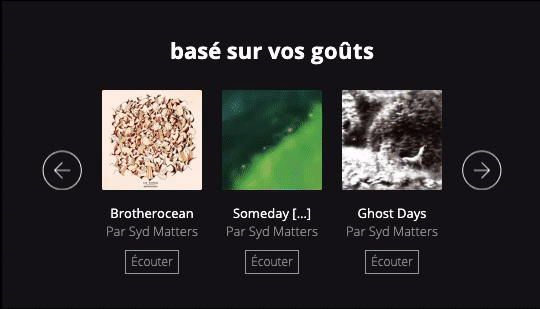
Animation for understanding
The watchword is subtlety. In any case, the fashion of frantically flashing things is largely outdated. The idea when you want to put animation in an email is either to introduce an atmosphere (a subtle reflection that looks very luxurious for example) or to accompany the reading (info bubbles).
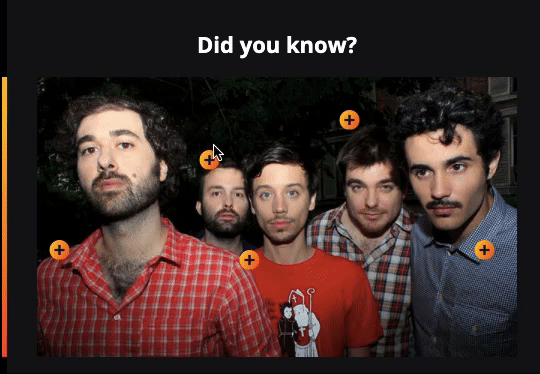
Animation (again) on hover over clickable (or not) elements
As explained above, we take new practices from the web (and here from e-commerce), and apply them to email. For example, on a product list, it may be interesting to show another view of a product when hovering.
Video
Video is a bit of a hot topic in email. Everyone has been talking about it for a long time, some have tested it, few really use it. However, today, even if restrictions still exist, the technique is well mastered. It is therefore necessary to start using it without delay.
Countdown
It's a bit like video. We've been talking about it for a few years but not all brands use it. The countdown is quite effective for promotions that are limited in time (flash sales, sales, Christmas ...)
Interactivity
Just one year ago, Google announced thatAMP for email was now available to all. At the same time, Outlook.com, Yahoo! and Mail.ru announced their intention to implement the technology. So that was last year's big excitement. Since then, the excitement has died down a little, with Outlook announcing the end of AMP support in its messaging services. So AMP isn't on the cards just yet!
Nevertheless, brands are looking for more and more interactivity in their emails. The challenge for integrators is to create interactivity in HTML/CSSBut of course, interactivity is not available on all email clients... So you always have to have a plan B.
But what do we mean by interactivity?
The fact of being able to directly within the email: click, save your data, and confirm. All this without leaving the message.
Here are some examples:
Be able to answer a quiz directly in an email
Other possibilities include:
- Take a survey or a mini-survey and see the questions displayed according to the answer previously given
- Fill out a collection form directly in the email
- Record user satisfaction in 1 click without referring to a landing page.
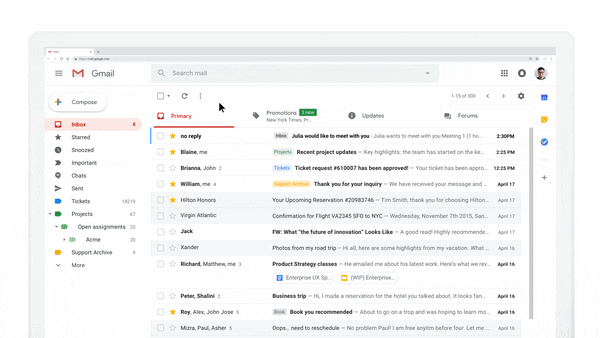
Improved message readability
The work on email readability is back on track. But it's not about jumping on the bandwagon. As of this writing, that means mainly three things:
Taking into account the Dark Mode
The Dark Mode in email clients and webmails has been around for a while now. It allows the user to reduce eye strain and also save some power from the screen.

The challenge is that Dark Mode changes the already complicated display of your emails to darken some parts, to change the colors of your elements. Another element to take into account in the design of your messages.
Accessibility
Character of something, of a place that is accessible: The accessibility of a bus, of a building to the handicapped.
Larousse
This is an important subject! On the web, the consideration of accessibility is more and more generalized during the redesign of sites. It is moreover a criterion more and more used in the calls for tender.
But in email, the accessibility standards generally used are difficult to respect. However, there are several techniques to make emails as readable as possible for visually impaired people.
To add to our argument, it turns out that good practices email accessibility are also the best way to make our emails readable by voice assistants. And you can't tell us that this is the past.
Minimalism
Fashion in design as in web design, it comes and goes. But it will be difficult not to notice that the more we advance, the more we remove what is useless! This is a good (and simple) opportunity to break the monotony of the usual templates of your emails.
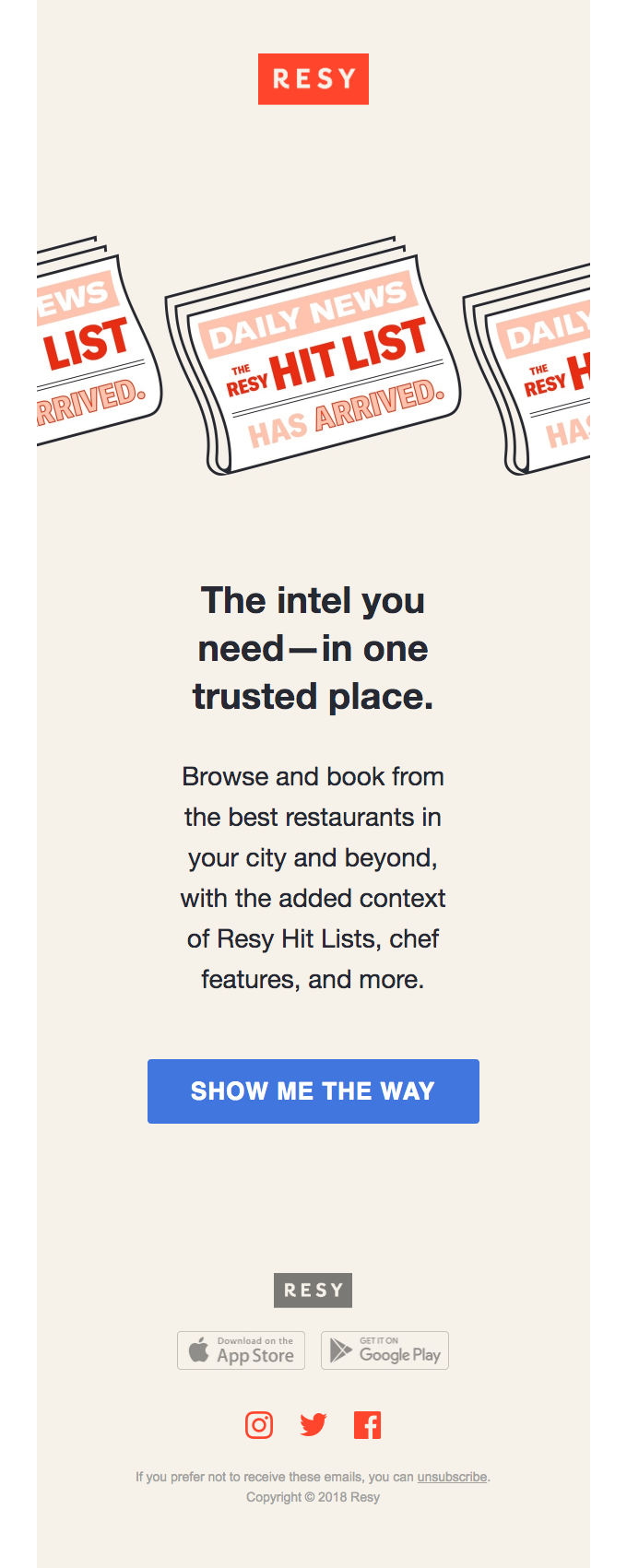
Editorial design
The volume effect drives the industrialization of email production
Very often, the The campaign sending schedule built by the marketing managers is based on the sales actions produced by the sales network. The newsletters and promotional emails then push products to a vast base of contacts. But, this base is composed of heterogeneous groups of people for whom, it is necessary to adapt the speech and the products put forward. This leads to a multiplication of email campaigns. We send more campaigns to more segments for the same sending date.
Industrialize email creation becomes indispensable for brands. Moreover, campaign management tools are investing in R&D to ensure that their 'email builder' functionality holds up, and/or are setting up connectors with email builder tools.
Towards more storytelling
Writing email content is not that easy. Recipients get so many emails, you have to be impactful, eye-catching and create interest to get the emails read. Descriptive content no longer works. For the past few years, we have been hearing a lot about storytelling. And it's quite an art! The art of knowing how to tell a story about the brand and the products/services. I see more and more content that is out of the ordinary and that's good!
The generation of students entering the workforce will bring new life to email content.
Content generation via artificial intelligence
What if our email content generated itself? Today, artificial intelligence is mainly focused on content recommendation, scoring, audience selection and timing. But new revolutions are to be expected in the coming months and years, such as AI-assisted Natural Language Generation (NLG). In fact, we organized a live about this.
That's how we see it! Feel free to tell us what you think in comments!
At Badsender, our goal is to shake up your emailing expertise! Our mission is to accompany you in your daily professional practice to help you seize all the opportunities of email marketing. Would you like to be accompanied by a coach? Don't hesitate to test our coaching service for only a few hours... or more if you like. Contact us !
2 réponses
very nice, this little summary.
At Scal-e we also believe that email will continue to influence the evolution of the market from relational to conversational campaigns by being more easily combined with other channels.
It's easy to start a relationship by email, to propose a QR code or button to switch to Messenger, WhatsApp, Telegram ... and once the conversation is over, follow up by email since it's cheaper or includes less constraints than other channels (like WeChat or WhatsApp) from a marketing point of view.
Thanks for these ideas/clarifications Christophe!